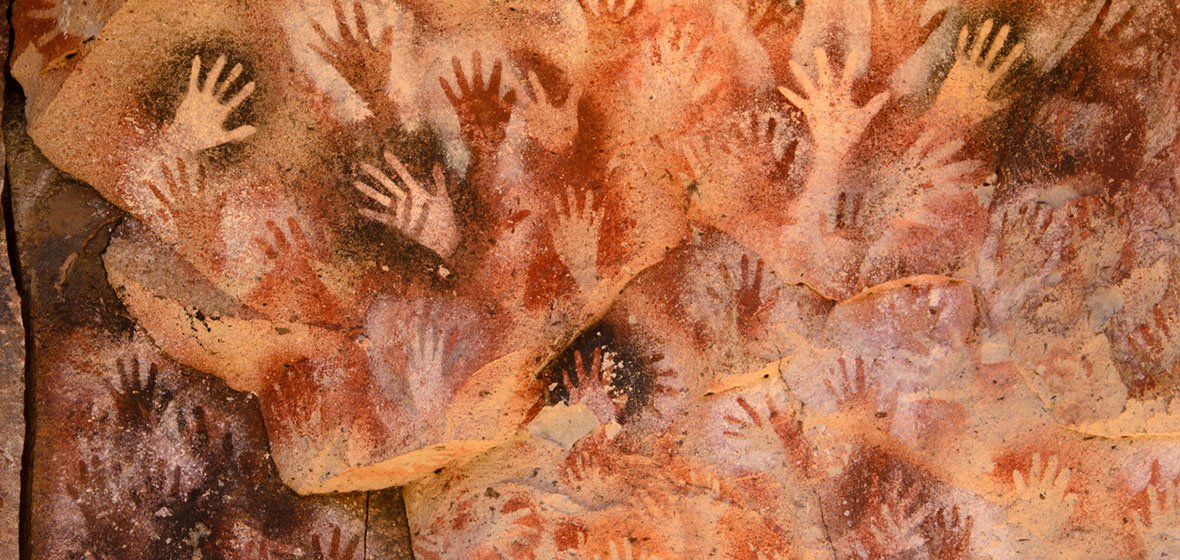Snapshot
- A new government proposal for stand-alone cultural heritage legislation proposes to expand the definition of Aboriginal cultural heritage to include intangible aspects and for the first time, confer upon Aboriginal people ownership of their cultural heritage.
- An overhaul of cultural heritage assessment, regulation and protection mechanisms is proposed, in an attempt to give key administrative and decision-making powers to newly created, independent, Aboriginal bodies.
- The Proposal Paper is on public exhibition until 18 December and a draft Bill will be released during this period. A series of face-to-face consultation workshops is also planned across the state.
Aboriginal cultural heritage is a part of the shared culture and history of NSW for Aboriginal and non-Aboriginal people alike. As well as being integral to maintenance of culture and history, and ongoing connection to Country, its protection is required by international law. On a domestic level, it has been widely acknowledged for some time, that the NSW legislative framework for assessing, protecting and regulating impacts on Aboriginal cultural heritage, has required reform. In response, the NSW Government has released a Proposal Paper for the introduction of stand-alone cultural heritage legislation, to facilitate an overhaul of the current framework. The Proposal Paper represents the culmination of a reform process, commenced in 2010.
The reform proposal
The Proposal Paper is on public exhibition until 18 December and is available, along with other consultation material, on the Office of Environment and Heritage (‘OEH’) website. A draft Bill will be released during the exhibition period, and there will be a series of face-to-face consultation workshops across the State. The reforms are underpinned by two key proposals. The first is redefining Aboriginal cultural heritage, to encompass not only objects and places, but also living, traditional or historical practices, ancestral remains, representations, expressions, beliefs, knowledge and skills. The new definition will also encompass the environment, places, landscape, objects and materials associated with those cultural expressions. The second proposal is to establish that Aboriginal cultural heritage is owned by Aboriginal people, and not the Crown. The exact mechanism by which this will be achieved is not included in the Proposal Paper.
Structural reform
The reforms propose a centralised Aboriginal Cultural Heritage Authority (‘ACH Authority’), constituted of Aboriginal people, which will take over most of the administrative and decision-making functions currently performed by OEH and the Minister for the Environment. The ACH Authority will appoint and oversee a network of Local Aboriginal Cultural Heritage Consultation Panels (‘ACH Panels’).
The ACH Authority will be appointed by the Minister and will be responsible for administration of the new legal framework, developing the various guidelines, policies and methodologies within the new framework, and making decisions in relation to Aboriginal Cultural Heritage Management Plans (‘ACHMPs’). The Minister will retain the functions of declaring specifically protected cultural heritage and approving cultural heritage mapping, however the ACH Authority will make recommendations to the Minister on the exercise of both of these powers.
The membership criteria and boundaries of the ACH Panels will not be set out in the draft Bill and will be subsequently established by the ACH Authority. The ACH Panel’s main function will be to negotiate ACHMPs. The ACH Panels will also advise the ACH Authority on the administration of matters within each local area, develop strategic plans for conservation and funding priorities, implement approved ACHMPs, and manage repatriation processes. The Proposal Paper indicates that the ACH Panels will likely need to source outside support from Local Aboriginal Land Councils (‘LALCs’) to carry out these functions.
Procedural reform
The Proposal Paper also includes reform of core procedural aspects of the current framework, including:
- replacing the Aboriginal Heritage Impact Permit (‘AHIP’) approval process with a negotiated ACHMP process. State Significant Development, State Significant Infrastructure and specified low-impact activities will continue to be excluded from these approval processes. The ACHMP approval process will be formally integrated into development assessment and approval processes under the Environment and Planning and Assessment Act 1979 (NSW);
- replacing the Aboriginal Heritage Information Management System (‘AHIMS’) with a new system with restricted public access to ensure protection of culturally sensitive information;
- the development of a NSW Aboriginal Cultural Heritage Map (‘ACH Map’), which identifies land on which cultural values are known or are likely to be present;
- the development of strategic plans, which will identify cultural heritage conservation priorities;
- the consolidation of funding for conservation activities through the ACH Authority;
- replacing the current Aboriginal Place declaration process with a process for Declared Aboriginal Cultural Heritage, encompassing more than just sites of significance, commensurate with the new expanded definition of cultural heritage;
- replacing Voluntary Conservation Agreements with a suite of new agreement types, to be administered by the ACH Authority; and
- the development of a repatriation process for return of artefacts and burial remains to their Country.
The proposed ACHMP process will be the cornerstone of the new framework, reflecting the determinative role that project-specific assessment and approval processes play in authorising impacts to Aboriginal cultural heritage.
The first step in this process will be for project proponents to review the ACH Map. If the ACH Map indicates there is not likely to be Aboriginal cultural heritage present in the development area, the development can proceed, in compliance with a standard ‘unexpected finds’ policy. If the ACH Map indicates the presence or likely presence of Aboriginal cultural heritage (or in all cases where an Environmental Impact Statement is otherwise required under planning law), the proponent and the ACH Panel will meet to discuss the development, to enable the Local ACH Panel to determine whether there is or is likely to be Aboriginal cultural heritage present on the development site.
If the ACH Panel does so determine, the proponent and the Local ACH Panel will conduct a scoping assessment to determine the tier of ACHMP required: basic, standard or complex. There will be different standards of cultural heritage assessment prescribed for each tier.
After this scoping assessment, the proponent will carry out the cultural heritage assessment accordingly and provide an assessment report to the ACH Panel. The proponent and the ACH Panel will then negotiate an ACHMP, which will identify agreed impacts to cultural heritage, and how those impacts will be managed. There will be prescribed mandatory negotiation timeframes for each ACHMP tier. After an ACHMP has been negotiated, or the mandatory negotiation timeframe has passed, the ACH Authority will make a decision whether to grant or refuse an ACHMP. It is proposed the developer would have merits appeal rights in the event of a refusal.
Aboriginal control over Aboriginal cultural heritage?
A number of consistent recommendations have arisen from the various reviews of NSW cultural heritage laws undertaken over the last several decades (the following summary is adapted from Norman Laing and Kellyanne Stanford, ‘Aboriginal Cultural Heritage Law: A Long Road to Reform’, 14 The Law Society Journal of NSW, August 2015, 88-89):
- establishing stand-alone cultural heritage legislation;
- redefining cultural heritage to mean more than just artefacts (i.e. moving beyond a ‘stones and bones’ approach);
- placing Aboriginal people in control of Aboriginal cultural heritage, including decision-making powers; and
- recognising the role of Aboriginal Traditional Owners in the management of their cultural heritage.
The reform proposals certainly meet the first two of these recommendations; as noted above, these are in fact key elements of the new framework.
In respect of the latter two recommendations, it is noteworthy that the key decision-making power in the approval process nominally rests with the ACH Authority, a body made up of Aboriginal people. This will include the ability to refuse to grant an ACHMP where it determines the impacts a proposed development would have upon cultural heritage values are such that they should not be permitted. The ACH Panels, also made up of Aboriginal people, will be the interface by which local information and perspectives are communicated to the ACH Authority.
Whether this will actually deliver practical control of decision-making to Aboriginal people, and recognise Traditional Owners in that process, will depend however on two factors not addressed in the Proposal Paper (and which are not intended to be addressed in the draft Bill):
- whether the bodies will be constituted so as to provide adequate and appropriate representation of the multiplicity of different and often disparate Aboriginal perspectives on cultural heritage, at both the local and State level, including recognition of cultural authority; and
- whether the bodies will be sufficiently resourced.
The suggestion in the Proposal Paper that ACH Panels will need to externally source the administrative and other support necessary to allow them to operate is problematic. Independent resourcing should be provided to allow ACH Panels to freely choose whether or not to draw on existing organisations to support them. This will be particularly important in areas where the selection of any individual LALC or other organisation to support the ACH Panel would be divisive and potentially undermine the support for and perceived legitimacy of the Panel.
In relation to the ACH Authority, the Proposal Paper refers to an ongoing role for government agencies in providing operational support to the Authority. Whilst this is appropriate given the proposed four-year transitional period, any ongoing reliance on resourcing from government agencies is a major risk to the Authority’s independence.
Conclusion
The proposed NSW Aboriginal cultural heritage reforms will certainly be a vast improvement on the current system, however, without the benefit of further detail, particularly around the constitution and resourcing of the ACH Authority and ACH Panels, there is no certainty that the reforms will deliver Aboriginal people genuine and practical control over decisions affecting their cultural heritage, in all its manifestations.
* The views in this article are those of the author and do not necessarily reflect the views of NSW Young Lawyers.
 Ross Mackay is an Independent Legal Consultant and Chair of the NSW Young Lawyers Environment and Planning Law Committee.
Ross Mackay is an Independent Legal Consultant and Chair of the NSW Young Lawyers Environment and Planning Law Committee.




